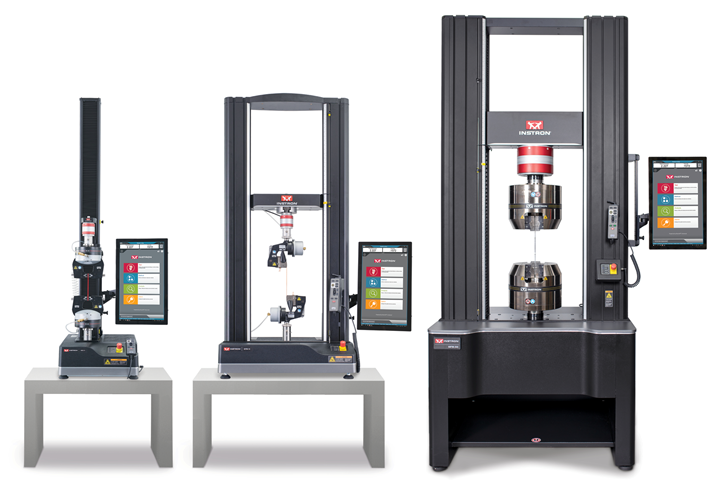CAMX 2022 exhibit preview: Instron
Featuring gaskets, a patent-pending airflow design, fortified frames, abrasion-resistant coating and more, Instron's 6800 Series systems are designed with composites and other complex materials testing in mind.
Instron (Norwood, Mass., U.S.) presents its 6800 Series universal testing systems. The new-generation testing machine is available from 500 N capacity on a single column system up to 300 kN with a floor model machine. Instron’s CAMX exhibit features a 50 kN table model system.
Instron says its 6800 Series floor models provide a new dimension of performance and durability. Reduction in debris ingress is achieved through gasketing and a patent-pending airflow design. The new frames are fortified against shock and vibration, enabling for continuous testing at the maximum rated frame capacity. Additional design steps include locating internal electrical and mechanical hardware safely away from the test area and an abrasion-resistant coating applied to the 12-mm metal work surface to assist with durability.
Designed with composites testing and other advanced materials in mind, the 6800 Series systems and Bluehill Universal software are equipped with a new Collision Mitigation feature to help reduce accidental equipment and specimen damage. Collision Mitigation enables the systems to continually monitor force during jog and return, automatically stopping the crosshead movement if an unexpected force is detected. Mishaps happen, Instron notes, and the goal of Collision Mitigation is to reduce the negative financial and downtime impacts associated with such occurrences.
All 6800 Series systems are equipped with an Auto Positioning feature which remembers a pre-assigned fixture separation and the starting location for the assigned test method. Instron says testing parameters and workflows can be closely controlled and described within Bluehill Universal software. An operator is shown a picture of the assigned fixtures, reminded to set travel limits and notified when and where the crosshead will move for test commencement. Combined with the system’s position encoder with a resolution up to 1.8 nm for a table model, or 1.14 nm for a floor model, it is ensured that specimen results are measured with complete precision.
Additionally, to ensure axial alignment, wedge grips use a moving body design, enabling for easier specimen placement with laterally uniform grip engagement. The result is improved data repeatability and reduced testing errors.
Instron’s 6800 Series systems are equipped with maintenance-free, brushless AC servomotors supporting continuous cyclic, creep and relaxation testing for up to 10 days. Instron says the 6800 Series features a data acquisition rate up to 5,000 Hz, ensuring test events are not missed when testing composites with abrupt failures.
Related Content
-
VIDEO: Recycling and machining carbon fiber scraps
Elevated Materials has partnered with Toray Composite Materials America, Inc. to collect and upcycle reclaimed carbon fiber scraps into large billet laminates, which can then be cut into various parts using CNC mills.
-
Composites specialist offers fiber handling, converting solutions
CAMX 2023: Visitors will have the opportunity to learn more about Cygnet Texkimp’s creels, filament winding, automation and handling, and recycling, with a special focus on web converting technologies.
-
CAMX 2023 exhibit preview compilation, Part 1
Prepare for CAMX 2023 in Atlanta with this list of 60+ exhibitor previews received by CW, highlighting key technologies, services and trends available to attendees.










.jpg;maxWidth=300;quality=90)




